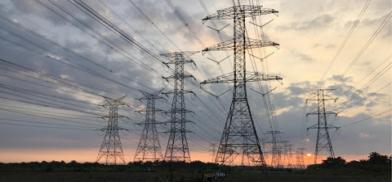South Asia’s energy cooperation: Politics can play the spoiler
South Asia’s diverse topography lends itself to greater cross-border power trade, but political inhibitions have ensured that actual progress has been less than the potential, writes N Chandra Mohan for South Asia Monitor

India has set up a high-level group headed by a former Union power secretary to further South Asia-focused energy security architecture. No doubt, this initiative - together with the ongoing moves to improve regional connectivity - represents a determined bid to counter China’s growing role in the neighbourhood.
To be sure, closer energy cooperation has featured in virtually all summit declarations of the South Asian Association for Regional Cooperation (SAARC), the most recent being the 18th summit held in Kathmandu in November 2014. But politics has cast a long shadow over this process.
India’s energy diplomacy
The key objective of this high-level group is to achieve a “balanced and optimal development of energy infrastructure through mutual understanding and cooperation.” Its role is to promote, initiate, and facilitate effective policy dialogue and capacity building for energy-related issues among South Asian countries, according to the Mint.
India’s energy diplomacy has consisted in promoting cross-border electricity trade. Besides plans to set up liquefied natural gas terminals, cross-border pipelines are also being built like the first one from Motihari in Bihar to Amlekhgunj in Nepal in 2019.
Energy cooperation with Bhutan
South Asia’s diverse topography lends itself to greater cross-border power trade, but political inhibitions have ensured that actual progress has been less than the potential. Countries like Nepal and Bhutan have hydropower potential in excess of their domestic requirements. The surplus generated by hydel power stations in Bhutan, for instance, coincides with the seasonal peak demand in the supply-short Indian economy. Bhutan in fact exports the bulk of its hydropower to India. Since 2008, power contributed 30 to 40 percent to its exchequer and one-third of gross domestic product.
Energy cooperation with Bhutan is indeed a stellar example of what India expects to do elsewhere in South Asia. India is helping Bhutan scale up its hydel capacity by 10,000 MW. Last year, a joint venture agreement was signed for the 600 MW Kholongchhu hydroelectric project. In 2019, the 720 MW Mangdechhu hydroelectric project was inaugurated by the Prime Ministers of India and Bhutan. Four hydel projects of bilateral cooperation - the 336 MW Chukha project, 60 MW Kurichhu, 1020 MW Tala, and 720 MW Mangdechhu projects - total of over 2100 MW is already operational in Bhutan.
Projected revenues from on-going and hydro projects in the pipeline bid fair to transform Bhutan into a middle-income country - exactly the sort of stake that Nepal perhaps needs to develop in India’s rise as an economic power.
India-assisted hydropower project in Nepal
India’s relations with this Himalayan nation, however, need to improve so that through co-development the latter can realise its hydropower potential of 60 GW, of which only two percent is being currently utilised. The expeditious implementation of the 900 MW Arun-III, Nepal's largest hydro project being built with India's assistance among other projects warrant priority attention.
The good news is that transmission projects have been successfully completed over the last five years.
India-Bangladesh Friendship Pipeline
India’s dealings with Bangladesh on energy exemplify how politics can deter or enable energy cooperation. A sea change in the bilateral relationship came with the Sheikh Hasina-headed regime in Bangladesh. The earlier regime headed by Khaleda Zia in fact refused a gas pipeline to pass through its territory to India from Myanmar.
But 16 years later, the India-Bangladesh Friendship Pipeline is being built connecting Siliguri in West Bengal and Parbatipur in Dinajpur district of Bangladesh for the supply of high- speed diesel. Bangladesh is also trading in power with India, importing 6.99 billion units in 2019-20, a five-fold increase of over 1.45 billion units in 2013-14.
The head of the high–level group told the Mint: “The idea is how best we can cooperate with each other so that energy shortage is reduced. It is for the benefit of all and to ensure that climate change concerns are also addressed adequately.” As noted earlier, this is being addressed by the cross-border trade in electricity.
India has been purchasing hydropower from Bhutan of 6.31 billion units in 2019-20, up from 5.56 billion units in 2013-14. However, India is a net exporter of power since 2016-17 especially to Nepal, Bangladesh, and Myanmar, according to Power System Operation Corporation Limited.
Politics a spoiler
But politics can play the spoiler for South Asian energy cooperation as it has often done earlier. While the high-level group can emphasise economic imperatives including the need for placing energy security on sounder commercial principles and adopting suitable power trading models, its success is predicated on the cooperation of neighbours. Barring Bhutan, India has not exactly had smooth sailing with the others, though some high-level visits and pandemic diplomacy have helped improve ties with Bangladesh, Nepal, Sri Lanka and the Maldives. Current plans to build an overhead electricity link with Sri Lanka thus depend on the tone and tenor of economic ties with the new regime in that island nation.
The challenge for India is to address sensitivities and inhibitions of South Asian nations if it is to defend its turf vis-a-vis China.
(The writer is an economics and business commentator based in New Delhi. The views expressed are personal. He can be contacted at nchandramohan@rediffmail.com)










Post a Comment